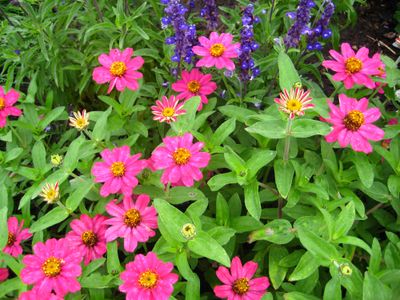Zinnia variety blooms profusely

Today’s featured plant is my favorite annual bedding plant. Way back in the late ’80s, I came across it at Callaway Gardens in Pine Mountain, Ga. It was such an eye-catcher, I had to have some. Unfortunately, it took many years before the Profusion series of zinnia made it to the Inland Northwest. It was worth the wait.
What makes these plants so special? To begin with, they bloom their little hearts out all summer long. They perform best when deadheaded regularly, but each flower is long-lasting so you won’t have to do this task very often. In addition to performing well in beds and containers, they can add splashes of color to the vegetable garden. The plants are disease-resistant and thrive in hot or cool areas and where there is high humidity. They are easy to grow and even attract butterflies. They make wonderful cut flowers because they really soak up the water, which makes them last a long time. With all of these delightful attributes, is it any wonder that cultivars in the Profusion series were chosen as All-America Selections winners?
Profusion zinnias initially were available only in orange, gold and white. Then Profusion Cherry was introduced. The newest colors include single or double apricot, coral pink and a sizzling red-orange called Fire. All of the colors are so vibrant, they are sure to brighten any place they are planted. The blossoms are 2 to 3 inches in diameter.
The plants grow in small mounds, reaching a height of about 12 inches and spreading as much as 20 inches. Plants should be spaced 12 to 18 inches apart. They can tolerate some shade but thrive in full sun.
Profusion zinnias can be grown from seed or planted as bedding plants. When started from seed, it takes the plants about 60 days to begin flowering. But once they start, they will bloom until we have a killing frost.